It feels like every firm I talk to is trying to find staff. One often-discussed strategy to ease staffing needs is the use of technology, and when this comes up, most people immediately think of automation. But there are actually multiple types of technology that can be brought into play: automation, workflow, scheduling, and people. Most people are already familiar with automation technologies, so let’s focus on the other technologies.
Use Workflow Technology to Optimize Workloads
Workflow technology has been available for accounting firms for almost two decades now. At a basic level, it facilitates the tracking of tasks from one person to another person. Some workflow technologies include the ability to track review comments, due dates, and budgets. These types of technologies have been pretty widely adopted already, so if you aren’t using them yet, you are definitely behind the curve.
Better workflow technologies will also track when handoffs are occurring, how long a task has been sitting with someone, and hours spent on a particular task. Analyzing this data can provide insights that can help optimize operations. For example, consider the following questions:
- How long are tasks sitting in each person’s queue? Is someone holding up tasks? If so, determine whether training could help that person do the work faster or if assigning more people to the task could eliminate the bottleneck.
- Who doesn’t have enough of a backlog in their queue? This could identify underutilized resources. Could you balance workloads by shifting tasks to keep an underutilized team member busy while preventing burnout for someone else?
- On average, how long does it take to complete a particular task? This data might also be available from your time tracking system, if separate. Use it to analyze whether remaining work can be completed by desired due dates or to estimate how many hours people may need to complete the work. For example, you could analyze tax returns to figure out how many returns can be completed by a tax deadline (without exhausting staff with overtime) and how many should be extended.
Note that several of my suggestions above are tied to analyzing staff workloads and preventing burnout. That’s one of the biggest risks that firms are still facing, and reducing burnout can also help minimize turnover either during or after busy season.
Use Scheduling Technology to Optimize Resource Planning
Scheduling technology, more commonly called resource planning software, can be used to evaluate staffing needs and proactively create staffing plans. This is especially important when the work to be done requires particular technical or industry expertise.
To maximize the benefits of scheduling technology, you need to have good estimates for how long it will take to complete tasks, as well as an understanding of any special expertise needed. These are input into the software and used to project staffing needs into the future. You can assign existing staff and also input projected hires to identify staffing shortages. Once you know what your staffing shortages will be, you can proactively recruit for specific positions or talk with staffing outsourcing or offshoring companies.
Another way to utilize staff outsourcing is to identify which of your current staff could be put on an accelerated development plan, and instead hire outsourced staff to handle the lower-level work. For example, if you have enough tax preparers but not enough reviewers, identify which individuals from the preparer pool could quickly be trained to review, and then outsource their preparer work to free them up.
Use People Technology to Reduce Turnover
People technologies complement all of the other technologies and allow you to increase the engagement of your teams. Tools that facilitate one-on-ones or pulse surveys can provide more insight into how people feel or identify challenges they are encountering. With these insights, managers can be more proactive in addressing frustrations, conflict, or burnout—which eventually lead to turnover.
Appreciation technologies allow people to give each other thanks for help or support. While this doesn’t sound like a lot, research indicates that showing appreciation can greatly improve morale. Some appreciation tech includes the ability to provide monetary rewards as part of appreciation, which staff can then use for gift certificates or other prizes. In busy season, we often get so wrapped up in getting things done that we forget to thank each other. To get the most benefit from this, managers should ensure that they schedule a regular time each week to show appreciation—and note that it can be done with or without appreciation technology. A simple email of thanks can go a long way.
Through a blend of automation, workflow, and scheduling technology, you can improve the actual workload of your teams. Combine that with people technology to gain insights into whether the steps you’ve taken are working or if people are still struggling. And ensure that people feel appreciated and recognized for their efforts so that they know you care about them. All of these together can greatly help reduce burnout and turnover in the coming busy season.








